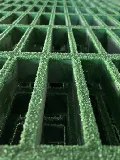loading...
- No. 9, Xingyuan South Street, Dongwaihuan Road, Zaoqiang County, Hengshui, Hebei, China
- admin@zjcomposites.com
- +86 15097380338
- Welcome to visit our website!
High-Strength FRP Steel Bars for Reinforcement | Lightweight & Durable Solutions
FRP Steel Bar Revolutionizing Construction and Infrastructure
Fiber Reinforced Polymer (FRP) steel bars have emerged as a transformative solution in the construction and infrastructure sectors. With advancements in materials science, FRP bars are designed to address several critical challenges inherent in traditional steel reinforcements. These innovative bars combine high strength, lightweight characteristics, and exceptional corrosion resistance, making them ideal for a variety of applications.
FRP Steel Bar Revolutionizing Construction and Infrastructure
Moreover, the lightweight nature of FRP bars facilitates easier handling and installation. Construction teams can benefit from reduced labor costs and improved efficiency on job sites, as these bars are easier to transport and manipulate compared to traditional steel. Additionally, the lower weight means that structural designs can be optimized, allowing for more innovative architectural concepts and reduced overall material use, aligning with sustainable construction practices.
frp steel bar

Another key advantage of FRP steel bars is their non-magnetic and non-conductive properties. This makes them particularly valuable in applications where electromagnetic interference must be avoided, such as in the construction of data centers, hospitals, and laboratories. Their insulating qualities also enhance safety measures in electrical installations, further promoting their use in diverse construction projects.
FRP steel bars are not only innovative in terms of performance but also in their environmental impact. As the global construction industry continues to seek sustainable solutions, the reduced energy consumption during the production and installation of FRP bars positions them as a preferred alternative. These materials often require lower energy inputs and can be manufactured using recycled fibers, thus contributing to more sustainable construction practices.
In conclusion, FRP steel bars represent a significant advancement in construction technology. Their impressive strength-to-weight ratio, corrosion resistance, and versatility make them suitable for a wide range of applications. As the industry evolves, the adoption of FRP technology promises to enhance the safety, durability, and sustainability of infrastructure projects around the world. With ongoing research and development, FRP bars are set to play a pivotal role in the future of construction, revolutionizing how structures are built and maintained.
-
Transform Your Spaces with FRP Grating SolutionsNewsNov.04,2024
-
The Versatility and Strength of FRP RodsNewsNov.04,2024
-
The Excellence of Fiberglass Water TanksNewsNov.04,2024
-
The Benefits of FRP Grating for Your ProjectsNewsNov.04,2024
-
Elevate Your Efficiency with FRP Pressure VesselsNewsNov.04,2024
-
Welcome to the World of FRP Pressure VesselsNewsOct.12,2024
-
Unveiling the Future of Filtration: Why FRP Filter Vessels are a Game ChangerNewsOct.12,2024
